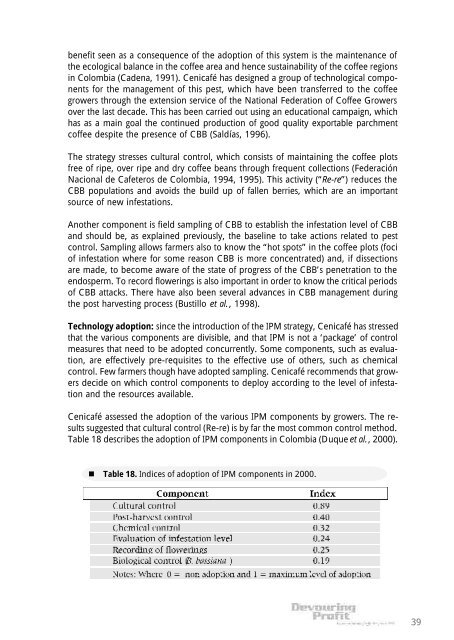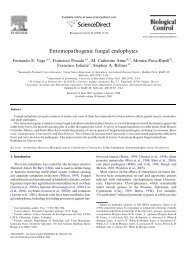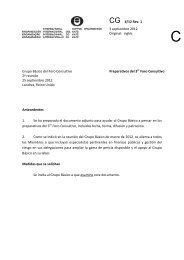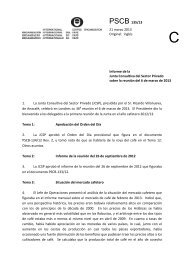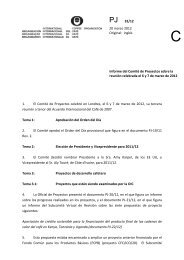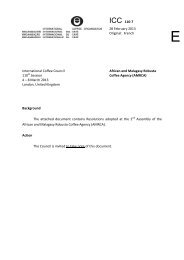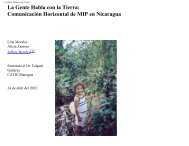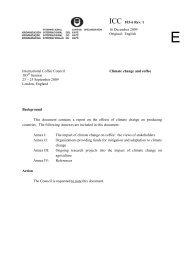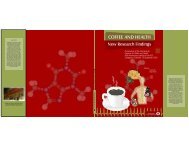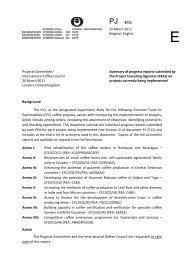Devouring profit - International Coffee Organization
Devouring profit - International Coffee Organization
Devouring profit - International Coffee Organization
You also want an ePaper? Increase the reach of your titles
YUMPU automatically turns print PDFs into web optimized ePapers that Google loves.
enefit seen as a consequence of the adoption of this system is the maintenance of<br />
the ecological balance in the coffee area and hence sustainability of the coffee regions<br />
in Colombia (Cadena, 1991). Cenicafé has designed a group of technological components<br />
for the management of this pest, which have been transferred to the coffee<br />
growers through the extension service of the National Federation of <strong>Coffee</strong> Growers<br />
over the last decade. This has been carried out using an educational campaign, which<br />
has as a main goal the continued production of good quality exportable parchment<br />
coffee despite the presence of CBB (Saldías, 1996).<br />
The strategy stresses cultural control, which consists of maintaining the coffee plots<br />
free of ripe, over ripe and dry coffee beans through frequent collections (Federación<br />
Nacional de Cafeteros de Colombia, 1994, 1995). This activity (“Re-re”) reduces the<br />
CBB populations and avoids the build up of fallen berries, which are an important<br />
source of new infestations.<br />
Another component is field sampling of CBB to establish the infestation level of CBB<br />
and should be, as explained previously, the baseline to take actions related to pest<br />
control. Sampling allows farmers also to know the “hot spots” in the coffee plots (foci<br />
of infestation where for some reason CBB is more concentrated) and, if dissections<br />
are made, to become aware of the state of progress of the CBB’s penetration to the<br />
endosperm. To record flowerings is also important in order to know the critical periods<br />
of CBB attacks. There have also been several advances in CBB management during<br />
the post harvesting process (Bustillo et al., 1998).<br />
Technology adoption: since the introduction of the IPM strategy, Cenicafé has stressed<br />
that the various components are divisible, and that IPM is not a ‘package’ of control<br />
measures that need to be adopted concurrently. Some components, such as evaluation,<br />
are effectively pre-requisites to the effective use of others, such as chemical<br />
control. Few farmers though have adopted sampling. Cenicafé recommends that growers<br />
decide on which control components to deploy according to the level of infestation<br />
and the resources available.<br />
Cenicafé assessed the adoption of the various IPM components by growers. The results<br />
suggested that cultural control (Re-re) is by far the most common control method.<br />
Table 18 describes the adoption of IPM components in Colombia (Duque et al., 2000).<br />
Table 18. Indices of adoption of IPM components in 2000.<br />
39


